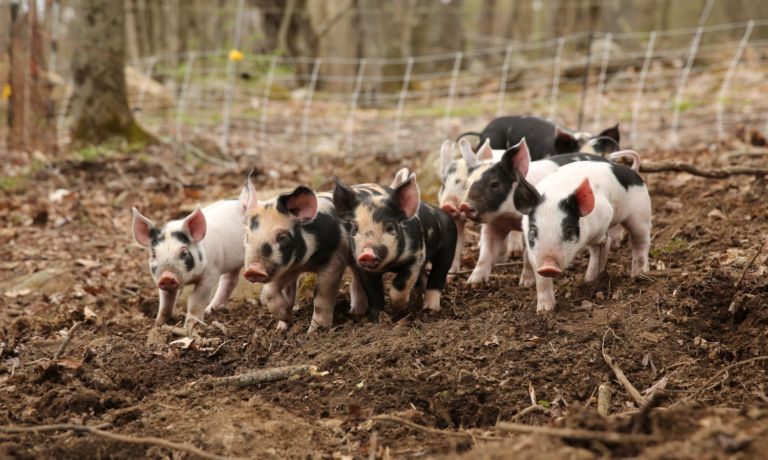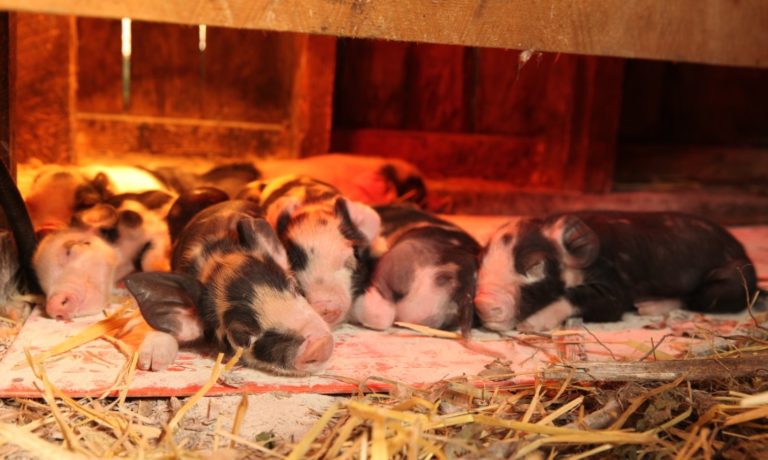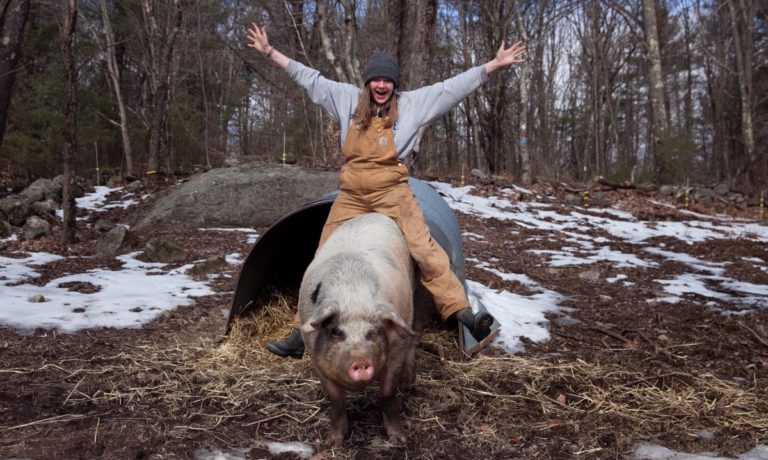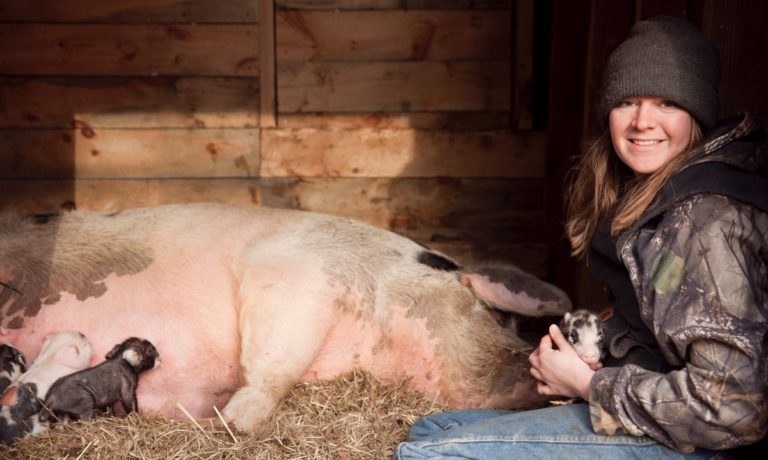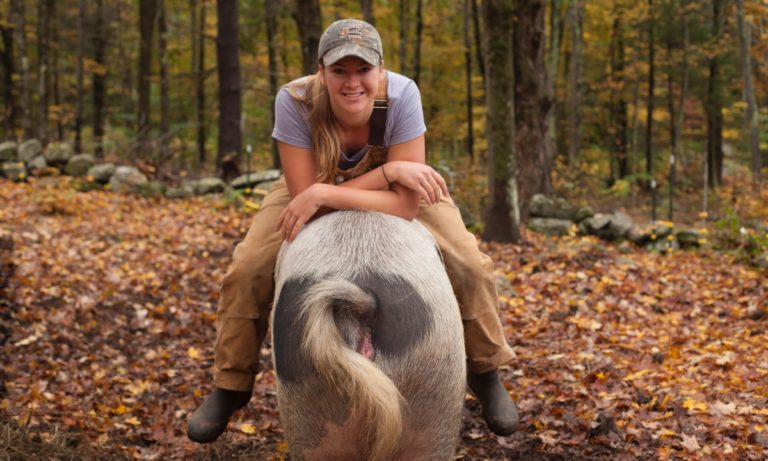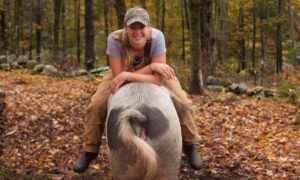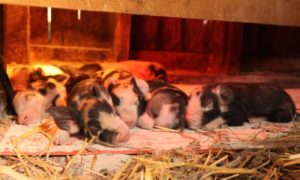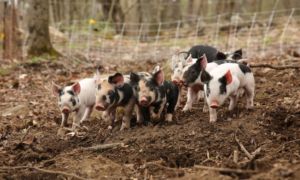Farrowing season is a very exciting time on the homestead, and personally is my favorite of all. It can be a bit nerve wracking (especially that first time) but just like with kidding, a well stocked farrowing kit is a safety blanket that makes me feel warm and fuzzy inside. Our vet that “treats” pigs is over an hour away, and to be honest I have more experience with farrowing than they do. I have learned the hard way some of the difficulties and issues that can arise, but I’d be lying if I said that my farrowing kit hasn’t saved piglets lives.
I detail the purpose of many of the items in my kit in my post on caring for piglets from birth to weaning, but not all. And some of the items I discuss in that post are not in my “farrowing kit” because they aren’t relevant to the farrowing or moments surrounding it, but later down the road. In addition to all of the items mentioned in both, there are medications I have accumulated over time that are multispecies and not necessarily “pig specific”. When you raise enough animals, there is a natural build up of medical supplies.
When I refer to the farrowing kit, I am referring to what is by the door waiting for me to grab on my way out when we have a mama in labor. As always, let this be my disclaimer this is what I use and have accumulated over time. There may be things that you may need that I don’t use, or vice versa.
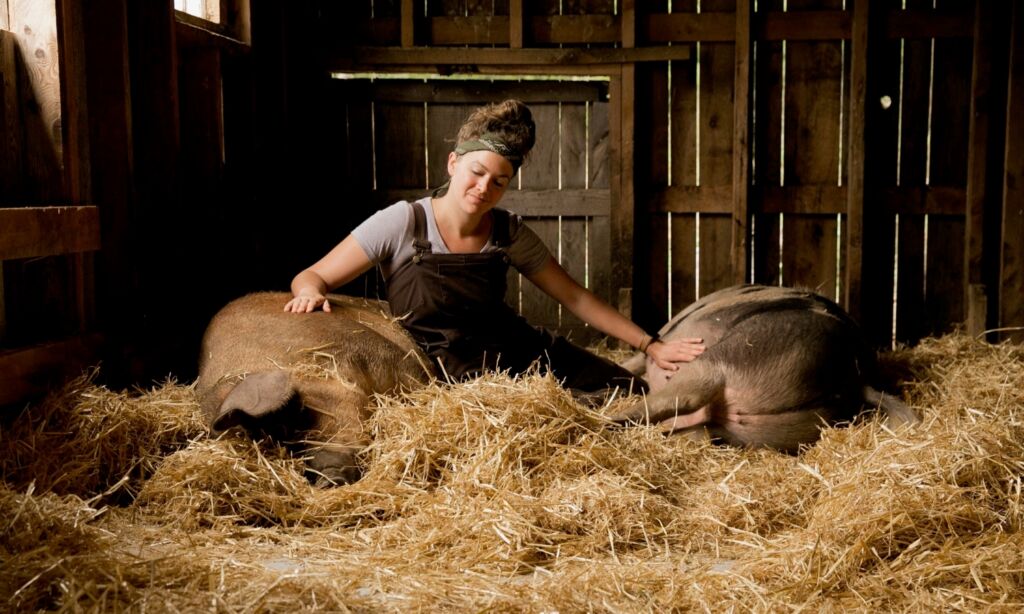
What's In the Kit
For the Piglets
- Mistral Powder
- Nutridrench for Pigs
- Iodine with spray nozzle
- Puppy Pads
- Frozen Goat Colostrum and small syringe for administering (not “in” the kit but something that I always have in the freezer in case a piglet needs a little extra help)
- Livestock Marker for marking litters
- Chlorhexidene Solution
The mantra around here for any baby being born is “dry, dip, drench, colostrum”. Mistral powder is used to dust on the piglets and dry them off (this is most important during winter farrowing not so much summer or fall), spray their cords with iodine, give them a couple pumps of Nutridrench in the mouth, and make sure they get that oh so important colostrum. The mistral powder is used for drying versus rags or towels, but I do keep some puppy pads in my kit to wipe my hands off as well as to help stimulate and revive piglets that are born close to death.
Chlorhexidene solution is always good to have on hand in any kit in the event of a cut or abrasion. I did have a piglet born with Epitheliogenesis Imperfecta. While it can be severe enough that the piglet should be euthanized, it wasn’t severe enough that didn’t clear up on its own with some antiseptic. It can come in handy.
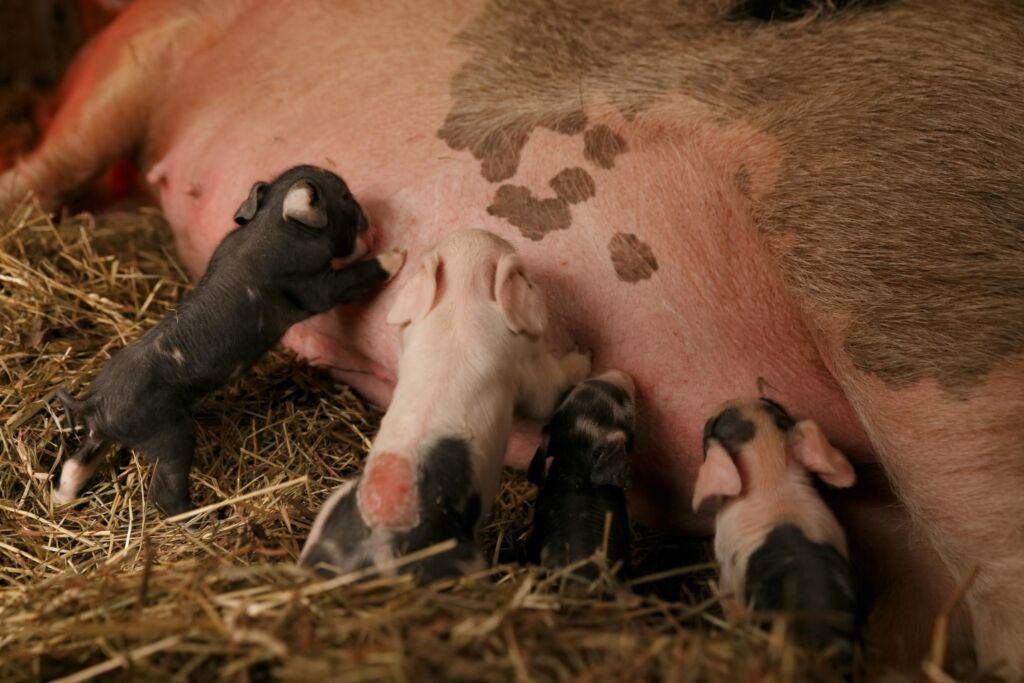
For the Sow
- Thermometer
- Chlorhexilube
- Shoulder length disposable polypropylene gloves
- Slapshot with various size syringes/needles if you need to administer meds to an agitated or ill sow
- Oxytocin
- Nutridrench
- Molasses/Corn Syrup
The administration of Oxytocin is another protocol that some feel very strongly for or against. While I do agree that it is very much mis and overused, there are circumstances where I do believe the benefits outweigh the risks when properly administered. I try to use it as an absolute last resort measure if I suspect there may be a retained piglet or placenta. For me, if I’m faced with the risk of infection and sepsis in my sow or administering a dose of oxytocin, I’m going with the oxytocin.
If I think the farrowing is over but I have not seen the placenta pass after quite some time, I will first sleeve up and go in to see if I can feel any piglets blocking the birth canal and pull them. If the birth canal is clear, and after more time there is still no placenta, I administer a dose. For several minutes after administering a dose, the hormone strengthens smooth muscle contractions which can help pass a retained piglet/placenta.
Throughout the farrowing I will occasionally give the sow some Nutridrench to help keep her energy up, and give her bumps of selenium that helps release the placenta naturally. You can also use molasses/corn syrup as well, that can be poured into the mouth or rubbed on their gums. Fortunately we have always had relatively quick labors that only last for 2-3 hours. But, if things aren’t moving along so quickly it can last as long as 8. So, a boost of energy to keep things processing along can prevent stalling.
Generally speaking, when it comes to farrowing for the most part the sow will get the job done on her own. I however am always of the mentality “I’d rather have something and not need it, than need something and not have it”. Especially considering our vet is largely useless when it comes to farrowing, not to mention over an hour away. Even if they were helpful, the chances of them getting here in time to be of any use are slim. Even more especially since farrowing always seems to happen here during the wee hours of the morning, when no one is awake much less open!
The ideal scenario for farrowing let alone any birthing is that mom does it all on her own unassisted, and without issue. Obviously this is the gold standard everyone hopes for. Sometimes no matter how good of a mother you have on your hands, or how good things have gone in the past, stuff just happens. We all need help now and then, and these are living animals we are talking about! We breed pigs to provide a source of feeders for our own consumption, as well as to sell to fund projects on the homestead and offset feed costs. So, I want as many healthy and live piglets as possible, and if that means occasionally I need to lend a hand, I will do it. It is for this reason that I always have my farrowing kit stocked and ready on hand.
Happy Farrowing,

